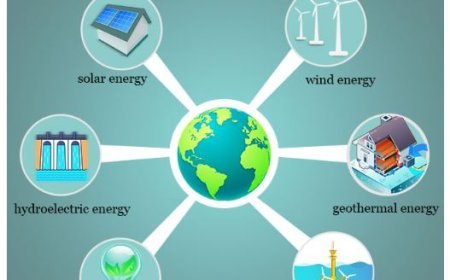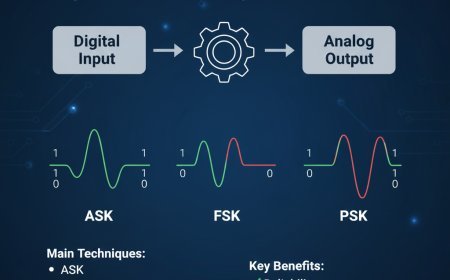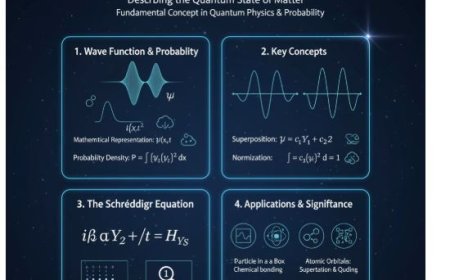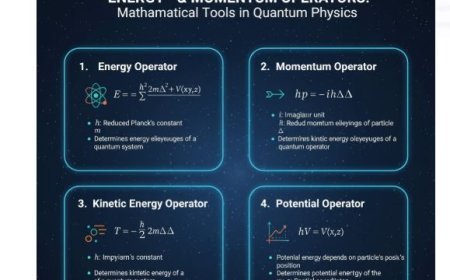Basic Theory of the Ground State of Deuteron
This article explains the fundamental concepts of the deuteron — its structure, forces, energy levels, and quantum mechanical ground state, highlighting its significance in nuclear physics and fusion. Learn the basic theory of the ground state of deuteron, its structure, forces, binding energy, and role in nuclear fusion and quantum mechanics.
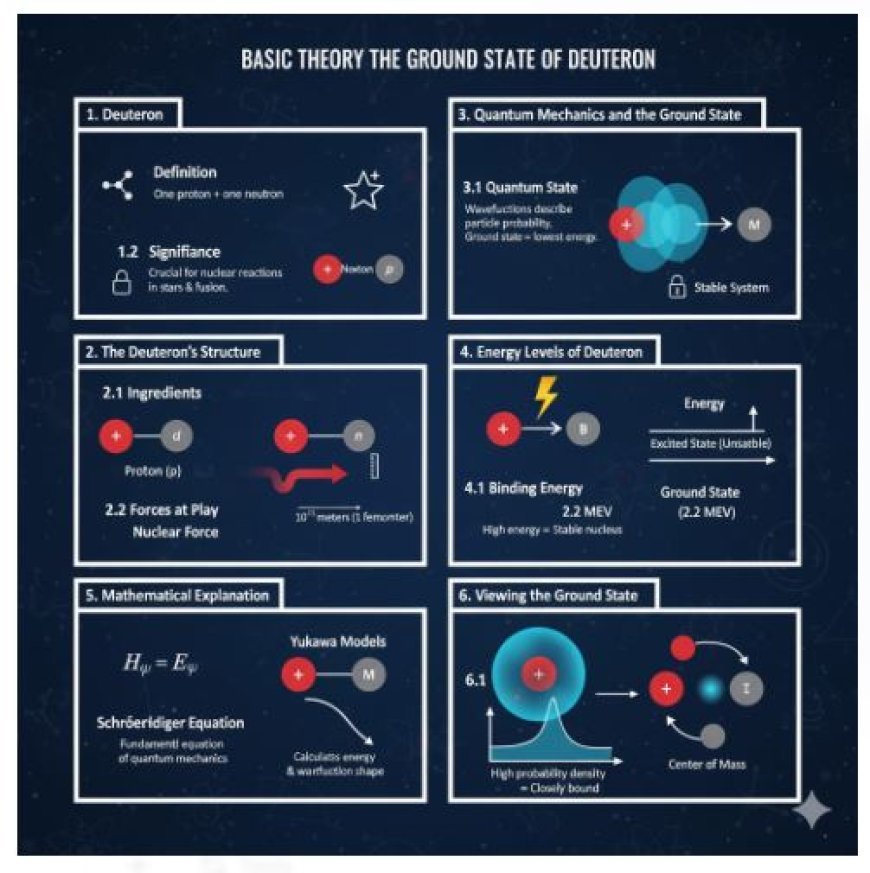
Basic Theory of the Ground State of Deuteron
1. Deuteron
1.1 Definition
A deuteron is the central part of deuterium, which is a type of hydrogen. It consists of one proton and one neutron, making it more complex than a hydrogen nucleus, which contains only one proton.
1.2 Significance
Studying deuterons is important in nuclear physics because they play a crucial role in nuclear reactions, such as those occurring in stars and during nuclear fusion.
2. The Deuteron’s Structure
2.1 Ingredients
The deuteron consists of:
- Proton (p): A particle with a positive charge.
- Neutron (n): A neutral particle.
2.2 Forces at Play
- The deuteron is held together by the strong nuclear force.
- This force is much stronger than the electromagnetic force, but it only acts over very short distances (about 1 femtometer or 10⁻¹⁵ meters).
3. Quantum Mechanics and the Basic State
3.1 Quantum State
In quantum mechanics, wavefunctions describe a particle’s state. These wavefunctions indicate the probability of finding a particle at a specific location. The lowest energy state of a system is called the ground state.
3.2 Basic State of a Deuteron
- The ground state of the deuteron is its lowest energy state.
- In this state, the proton and neutron are strongly bound, and their wavefunctions overlap, creating a stable system.
4. Energy Levels of Deuteron
4.1 Binding Energy
- The binding energy of the deuteron is the energy needed to separate the proton and neutron.
- For deuteron, this energy is approximately 2.2 MeV (million electron volts).
- This high binding energy makes the nucleus stable, meaning it has less energy than individual protons and neutrons.
4.2 How Energy is Shown
In quantum physics, energy levels can be represented as:
- The ground state is the lowest energy level.
- There are excited states at higher energy levels, but they are less stable.
5. Mathematical Explanation
5.1 Schrödinger Equation
- The behavior of the deuteron is described using the Schrödinger equation, a fundamental equation in quantum mechanics.
- Solving this equation for a two-nucleon system (such as the deuteron) helps determine its possible energy levels.
5.2 Possible Models
- The interaction between protons and neutrons can be understood using potential models, such as the Yukawa Potential, which explains the strong nuclear force.
- This model helps in calculating:
-
- Energy levels of the deuteron.
- Shape of its wavefunction.
6. Viewing the Ground State
6.1 Visualizing Wavefunctions
- The wavefunction of the deuteron’s ground state represents the probability distribution of its particles.
- A high probability density in one region indicates that the proton and neutron remain closely bound, ensuring stability.
6.2 Orbital Representation
- In a simplified model, the proton and neutron move in a defined orbit around their center of mass, forming the ground state.
What's Your Reaction?









